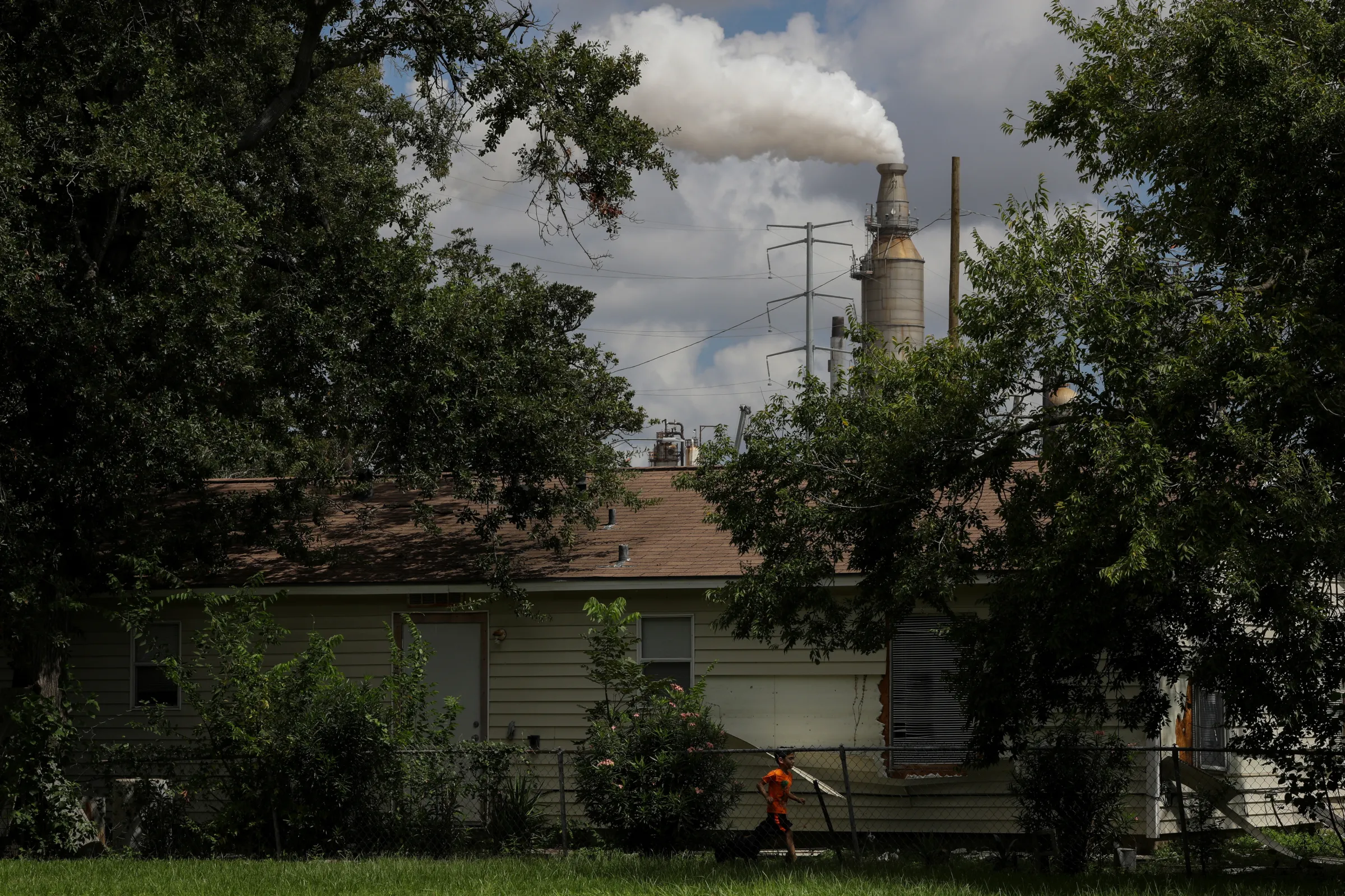What's the climate endangerment finding Trump wants to kill?

A child runs through the backyard of a home in the Manchester neighbourhood of Houston, Texas, U.S., October 3, 2018. REUTERS/Loren Elliott
What’s the context?
Trump wants to scrap the official view that climate change is bad for our health, a cornerstone of U.S. efforts to slow emissions.
WASHINGTON - U.S. President Donald Trump's second term in office has seen unprecedented rollbacks of federal funding for and focus on climate change, but critics say a new proposed change could now be the most sweeping yet.
The administration is seeking to rescind a 2009 regulatory ruling known as the endangerment finding, the government's view that climate change is a danger to human health and wellbeing.
The finding underpins U.S. policy and efforts to lower greenhouse gas emissions.
As nations gather for the COP30 climate summit in Brazil this week, critics say the move would mean little action from the world's second-largest emitter of carbon dioxide gas. The United States will not send high-level officials to the meeting.
"Without an endangerment finding, the U.S. cannot even come to the table" at COP30, said Dominique Browning, founder and director of Moms Clean Air Force, an advocacy group that works on public health and air pollution.
"This administration otherwise will do nothing to cut greenhouse gas emissions."
Here's what you need to know.
What is the endangerment finding?
The rule allows the federal government to regulate six greenhouse gases, such as carbon dioxide and methane, under the federal Clean Air Act of 1970.
States began using the law decades later to regulate greenhouse gases, sparking legal questions. The Supreme Court eventually ruled the gases qualify as pollutants under the act and directed the U.S. Environmental Protection Agency (EPA) to determine whether they pose a danger to humans.
The EPA in 2009 adopted the endangerment finding, specifying the dangers posed by the six greenhouse gases. Initially, it was specific to vehicle pollution, but has since led to findings on power plants, oil and gas operations and aircraft.
What was been the endangerment finding's impact?
It created the legal basis for much U.S. climate action over the past decade and a half, guiding both federal and state-level regulations as well as related scientific research, said Jill Krueger, climate and health director for the Network for Public Health Law, which offers legal technical assistance.
"The endangerment finding was foundational for much of what came afterward," she said.
That has included federal and state methane standards, work to reduce emissions from energy operations, the push to electrify the transportation sector and the approach to the green transition and renewable energy.
These efforts have had major positive consequences for public health, Kreuger said.
What changes are Trump seeking?
Trump, who has called climate science a "con job," wants to rescind the 2009 rule outright. His administration said it was created using "novel ... mental leaps" to link carbon emissions to climate change.
Rolling it back would be "the most consequential day of deregulation" in U.S. history, the EPA has said, estimating the endangerment finding creates $54 billion per year of regulatory costs for consumers and businesses.
The agency now wants to repeal all greenhouse gas emissions for vehicles, including heavy-duty trucks.
How could this change affect health and nature?
Revoking the finding would quadruple U.S. annual emissions to 32 billion metric tons, said Browning.
It would affect the health of every person in the United States, the American Lung Association warned.
The group's president said undoing this "cornerstone of public health protection" would permit pollution "that will lead to respiratory illnesses, cardiovascular diseases and premature deaths that could have been prevented."
Other protections are also at risk, said Krueger.
"It makes it easier and faster to point to a host of other regulations, and say there’s no longer any basis for regulation," she said.
The EPA's proposal is also raising concern for businesses that have heavily invested in limiting emissions.
The U.S. Chamber of Commerce expressed support for much of the proposal, but said it continues to support "reasonable" government efforts to reduce emissions, including from transportation.
What happens next?
The EPA received more than a half-million public comments on the proposed changes, which it is now reviewing before finalising the process before the end of the year.
If the federal finding is scrapped, local authorities could help fill the gap by speeding up building electrification to shift from their use of fossil fuels and constructing electric vehicle-charging infrastructure.
But they cannot regulate new vehicles, "meaning that without federal regulation, this heavily emitting source is left unregulated," groups representing thousands of cities warned in September.
(Reporting by Carey L. Biron; Editing by Anastasia Moloney and Ayla Jean Yackley.)
Context is powered by the Thomson Reuters Foundation Newsroom.
Our Standards: Thomson Reuters Trust Principles


















